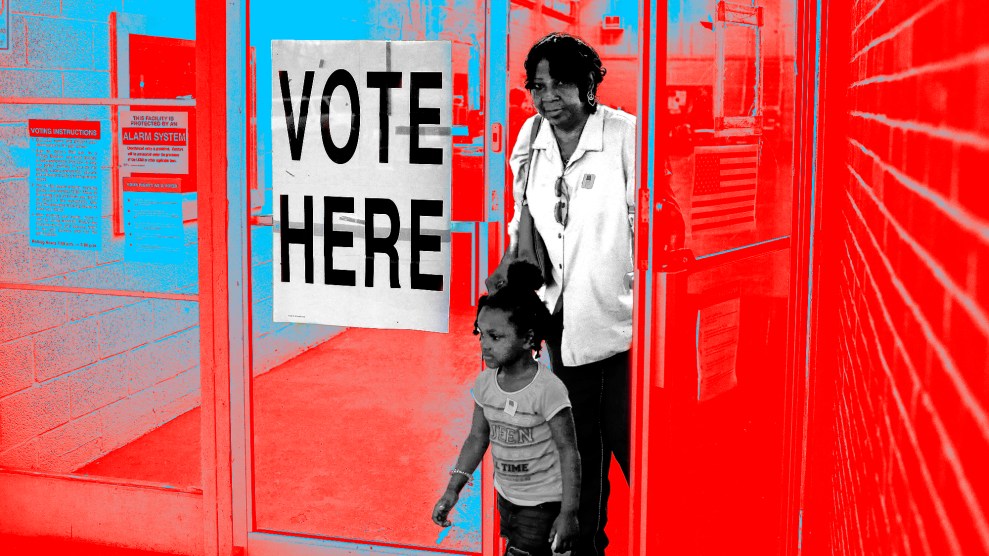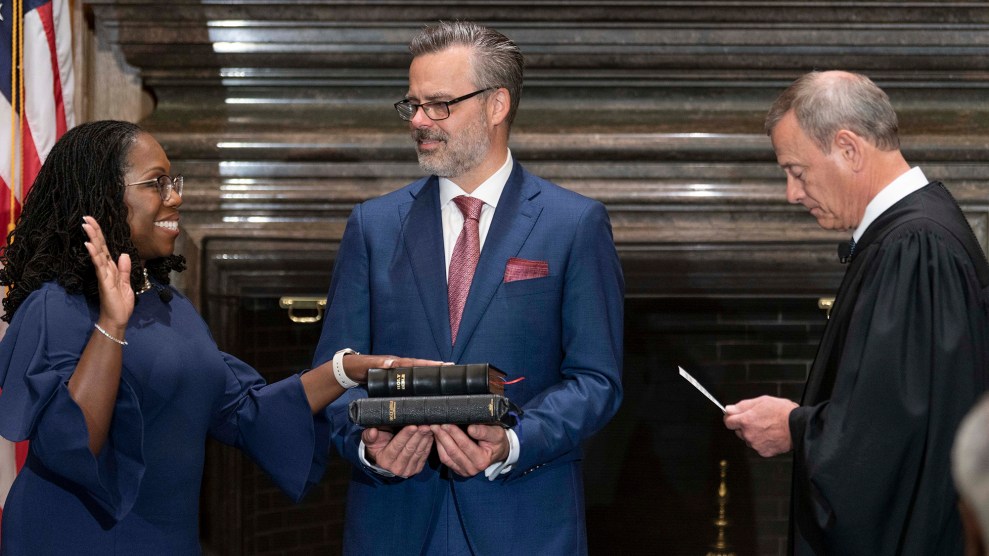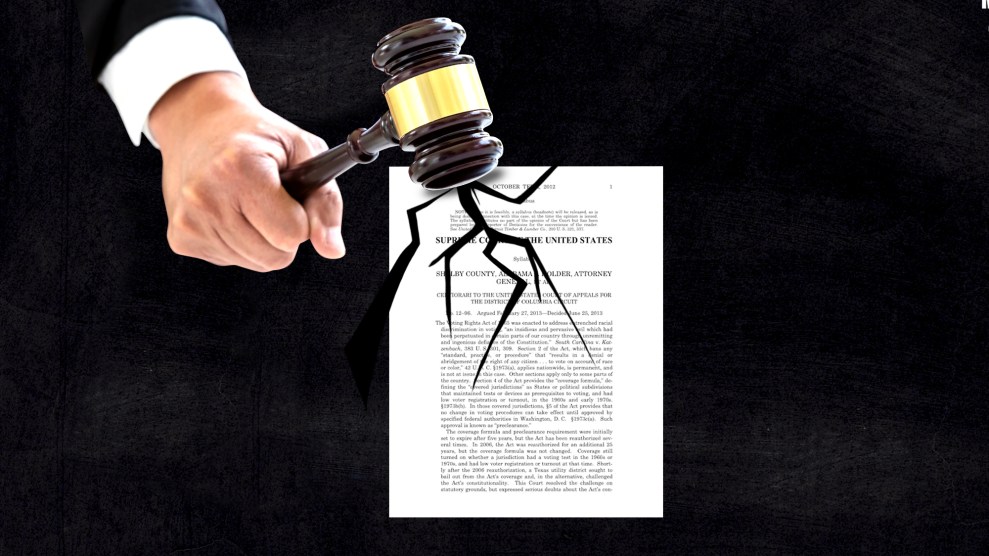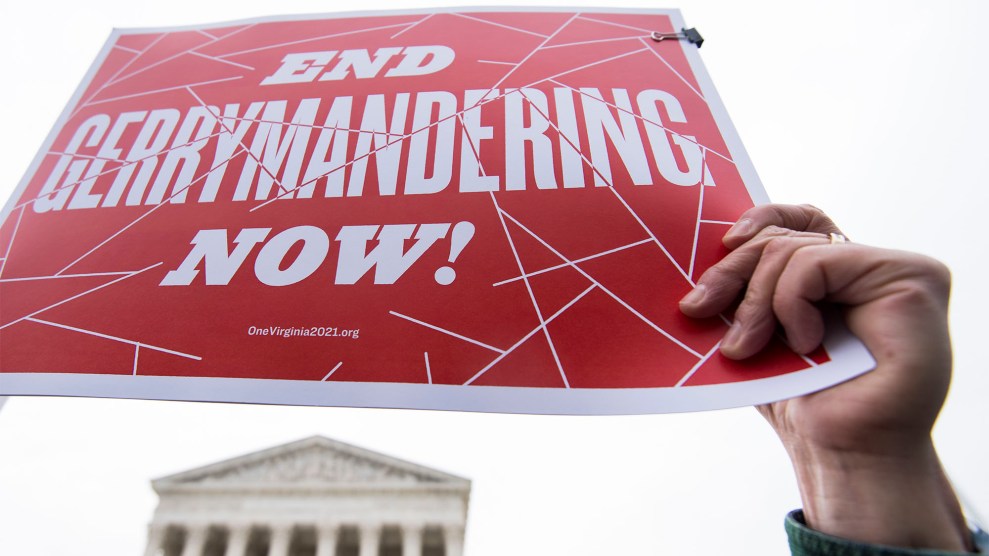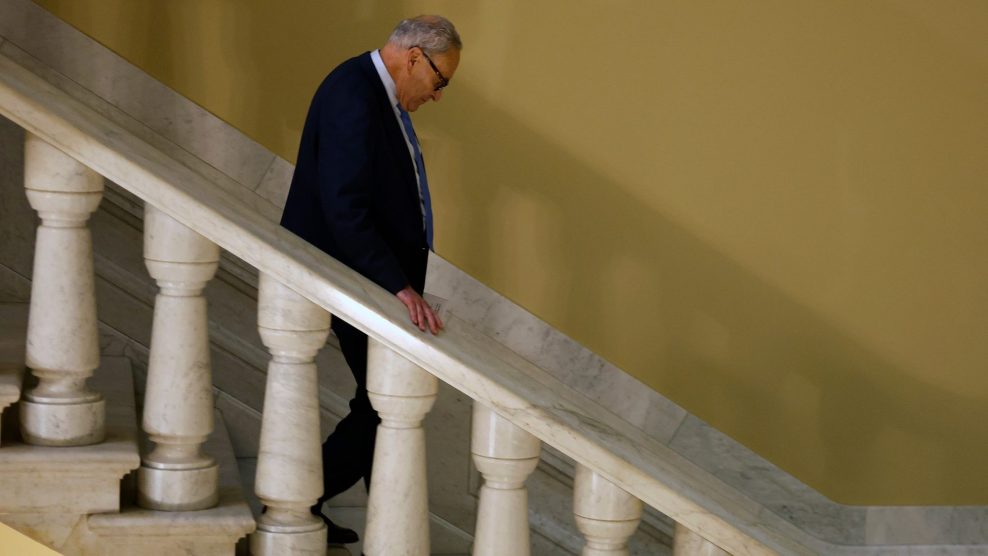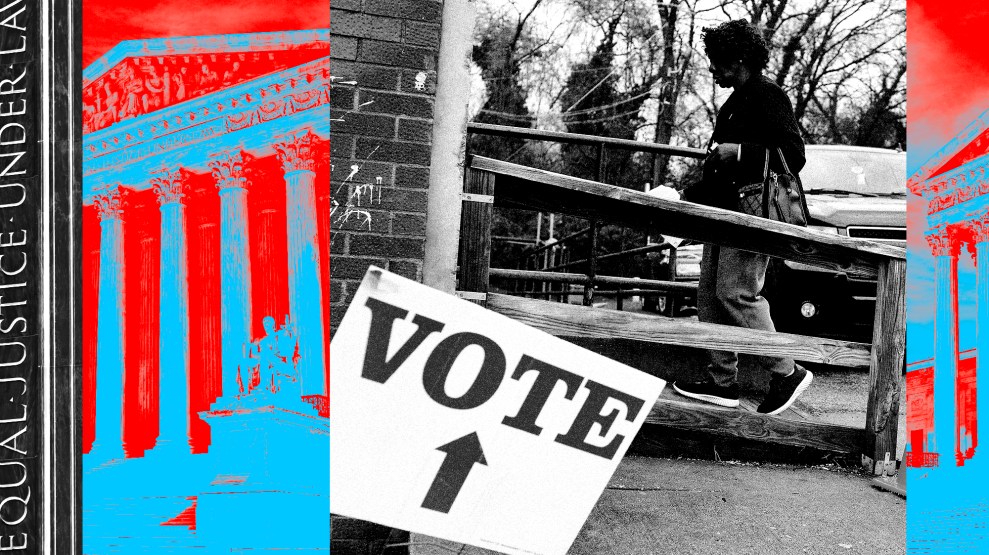
Mother Jones; Joshua Lott/AFP
The Supreme Court’s surprise ruling upholding the use of the Voting Rights Act in cases challenging political maps is likely to affect the 2024 elections and beyond—though how big the impact will be depends on how quickly courts across the country move in multiple cases challenging racial gerrymandering schemes.
Thursday’s opinion in Allen v. Milligan came out of Alabama, where civil rights groups alleged that the Voting Rights Act required the state two draw two districts where Black voters are likely to elect their preferred candidate instead of just one. And it is there where the case will have its most obvious effect. “Black voters in Alabama are entitled to an additional opportunity district in the upcoming election,” says Yurij Rudensky, senior counsel at the Brennan Center for Justice.
In Louisiana and Georgia, similar cases brought by civil rights groups and voters targeting maps enacted by Republican legislatures were awaiting Milligan‘s outcome. Now that the Alabama case has been decided in favor of the maps’ challengers, it is likely that both Louisiana and even Georgia could see new maps in 2024. If they do, each state could end up with an additional congressional seat with a large African-American population that would favor Democrats.
In 2013, the Supreme Court put an end to the Voting Right’s Act’s preclearance process—a system where states with a history of discrimination had to get approval from the Department of Justice or a federal court before changing election procedure, including issuing new political maps. When, ahead of the 2022 midterms, new census data was released and redistricting took place, it was the first time lines were redrawn nationwide without such oversight. That led to a large number of maps that likely discriminated against voters of color. In Alabama, the district court that first heard the Milligan case found that the Republican-controlled legislature had likely diluted Black votes in violation of Section 2 of the VRA and ordered a new map put in place for 2022. But in February 2022, the Supreme Court blocked that decision, allowing that year’s election to be conducted under the discriminatory map. It was too close to voting to put a new one in place, Justice Brett Kavanaugh explained.
Similarly, the Supreme Court stepped in to stop a Louisiana-based court that found the state’s 2022 map likely violated the VRA from putting a new map in place for 2022 until the high court decided the Alabama case. The delay effectively preserved two GOP seats and cost Black voters a chance to elect their preferred candidates. In Georgia, a district court found that state lawmakers’ proposals for their own districts, as well as the congressional lines they drew, may have violated the law, but, taking a cue from the Supreme Court, ruled it was too close to the 2022 elections to make new maps. Redistricting schemes now being challenged for violating the VRA and the Constitution in Texas and Florida likewise were in effect in 2022.
Though the justices’ backing of Section 2 is an important and unexpected win for voting rights advocates, it is not lost on them that the decision highlights how several states ran elections in 2022 using maps that likely would never have been approved if the Voting Rights Act’s preclearance procedures were still in place. Despite civil rights groups’ best efforts at waging rapid litigation to overturn these maps, the Supreme Court helped ensure some remained in place in 2022, including the Alabama districts the court itself found illegal this week.
“2022, we now know, happened under illegal maps,” Rudensky says, that were put in place after lawmakers around the nation spent years attempting more brazen ways to violate the VRA, likely under the assumption that the Supreme Court would continue to unwind its protections.
Given the sluggish pace of litigation and appeals, it could be years before fair maps are implemented in multiple states across the South. Even under Milligan, without preclearance, the Supreme Court has set up a system in which it takes years, and potentially multiple election cycles, to get justice. While Alabama’s and Louisiana’s cases seem relatively straightforward and like places likely to conduct 2024 elections under new maps, there’s a chance things could go differently in Georgia. The Texas case isn’t as far along. And after the district courts apply Milligan, appeals will almost certainly drag things out further. Despite the outcome on Thursday, the slow pace of replacing biased maps seems likely to entice lawmakers to draw more illegal gerrymanders that they know are destined for court challenge, but that could stay in place for at least one election cycle.
The Milligan decision is set to ripple out far beyond the South and Capitol Hill. Texas is also facing litigation over its state legislative maps, where the ruling should apply, with similar challenges happening in Washington state and North Dakota. In Mississippi, voters are challenging their elected state Supreme Court justice’s districts. While Milligan and other congressional redistricting discrimination cases get the most national attention, court action under Section 2 of the VRA is historically much more common in local election disputes. Rudensky estimates there are about 30 active cases pending nationwide, the vast majority of which deal with such districts.
While Section 2 was preserved on Thursday, it’s not necessarily safe forever. Chief Justice Roberts’ majority opinion noted that his decision did not foreclose future challenges. And Justice Kavanaugh, who joined Roberts and the liberals to produce the 5-4 decision, noted in a concurrence that the VRA’s protections against vote dilution may some day expire. But until the Supreme Court takes up another challenge to the law, Thursday’s ruling is not only set to change the make-up of Congress after 2024—it could breathe new life into civil rights groups’ fight against discriminatory maps nationwide.

